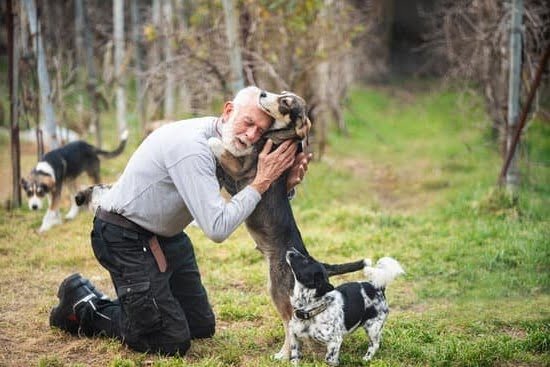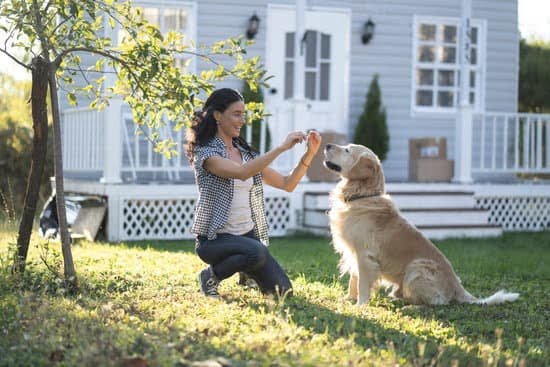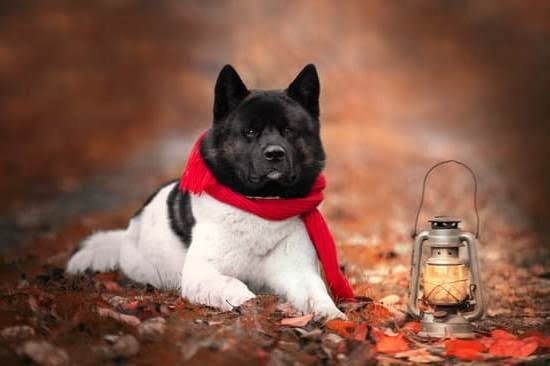Introduction
Yes, you can use puppy training methods on an older dog. Puppy training methods are a great way to help any dog learn basic obedience and good behavior, regardless of the dog’s age. By reinforcing good behaviors with positive reinforcement and rewards, an older dog can learn just as quickly and easily as a young pup. Additionally, puppy training methods are an effective way to address any existing problem behavior in an older dog. The early introduction of commands such as sit, stay, lie down and come can help speed up the learning process for an adult animal who may have had limited or no prior training. This approach also instills positive associations with basic obedience commands so that the animal feels comfortable and secure when responding to them in the future. Finally, starting off with quick success from easy to accomplish tasks helps build trust between human and canine which is essential for having a well-behaved pet.
Understanding What Training Methods Work Best for Older Dogs
In general, the same principles apply when training an older dog as do for younger dogs. However, it is important to remember that older dogs have physical limitations and may be less able to learn new behaviors than young puppies. Older dogs will also have had far longer to form habits and routines which might be more difficult to adjust or break. In addition, they may have built up negative behaviors and patterns of behavior which will make any training of them more difficult or take longer.
When training an older dog, patience is key. Consistency in expectations and rewards are also important; rewarding the good behavior whenever it occurs and never reinforcing unwanted behaviors. It is essential that you identify desired behaviors, create a positive environment with plenty of praise and treat rewards, use consistent strategies including positive reinforce techniques such as clicker-training and avoid harsh methods (e.g shock collars) which could cause distress or confusion for your pet. Setting realistic goals depending on the age of your pet is also important- some old dogs may only ever be able to learn simpler behaviors whereas younger animals not yet shaped by years of habit can learn far more complex commands than older ones with the same level of patience, consistency and reward systems employed.
Establishing Structure and Consistency
Yes, it is possible to use puppy training methods on an older dog. The key is to establish structure and consistency in the training process. Setting rules and boundaries with an older dog can be difficult, but it is essential in order to maintain discipline and help teach the dog acceptable behaviors. Having a solid routine can help with this process–make sure that walks, mealtimes, nap times, and play activities are all done during designated times—your dog will begin to associate these activities with the time of day they occur and understand when it’s time for each activity. Additionally, positive reinforcement should be utilized for behaviors that you want your dog to repeat; if your dog follows a command successfully, reward them with treats or verbal praise immediately. Lastly, remember that patience and repetition are key components; unlike puppies younger dogs may not catch onto activities on their first attempt so remain patient and consistent during their training period for ideal results.
Developing New Training Strategies for Older Dogs
The short answer to the question is yes, puppy training methods can be used on older dogs. However, it is important to remember that older dogs have likely developed some habits that may need to be reset in order for them to learn new ones. Older dogs may feel more comfortable with gentle, positive reinforcement techniques such as patting and verbal praise. They might be slower learners than puppies so patience and consistency are key.
When developing a new training strategy for an older dog it’s important to take into account any existing behavior or physical issues that the dog may have due to age. This way you can tailor an appropriate method or adjust the level of intensity based on your dog’s individual needs. For instance if your pet is having difficulty hearing due to age, hand signals instead of verbal commands may prove beneficial when teaching them new things. If there are joint issues related to age, the focus should be on low-impact exercises or activities that will strengthen their muscles without straining them too much.
To further increase the success rate of any training attempts ensure you set achievable goals for each session and keep things as fun and positive for your pet as possible!
Reinforcing Good Habits with Positive Reinforcement
Yes, you can use puppy training methods on an older dog. Positive reinforcement is a great way to reinforce good habits in dogs of any age. It’s particularly effective for introducing new behaviors and commands to older dogs, as they have already been conditioned by the environment and may not respond to harsher training techniques. Positive reinforcement involves rewarding desired behavior with treats, compliments, or even affection. A common mistake is to focus more on corrections than rewards when training an older dog; instead, it’s important to remember that positive reinforcements are key in creating new habits for your pet. With consistency and patience, older dogs can learn new tricks just as quickly as puppies can.
Dealing with Problem Behaviors in Older Dogs
Yes, you can use puppy training methods on an older dog. However, it’s important to note that the methods used for a puppy may slightly differ from those used for an adult dog. This is typically due to the fact that puppies have a shorter attention span and younger dogs tend to be more easily distracted than mature dogs. Additionally, there are also some specific elements of puppy training that will not be effective when teaching an older dog, such as teaching basic obedience commands. When dealing with problem behaviors in older dogs, it’s best to focus on positive reinforcement as this will motivate them, and also help to build trust between you and your pet. Another important element of positive reinforcement is to make sure that the rewards are given immediately after your pup does something well so they develop a strong association with whatever behavior is desired. It’s essential to understand which behaviors will not be tolerated before any corrective measures are taken and your pup should always be taught with kindness and patience in order for them to learn new commands more easily.
Avoiding Mistakes When Training an Older Dog
Yes, you can use puppy training methods on an older dog and it’s something that many animal behaviorists recommend. When dealing with an older dog, however, it’s important to remember to take things slowly. An older dog may have stronger beliefs about their behaviors, so you want to make sure that any new training uses rewards-based reinforcement. Additionally, ensure your timing is correct as well – if modifications aren’t being made fast enough then the lesson won’t stick. Be patient when introducing new commands and gradually increase the difficulty level as your pet progresses in their education process. This will help to keep them engaged throughout the duration of their training sessions. Additionally, never resort to physical punishment or negative reinforcement when trying to get a response from an older dog – this could actually damage the trust between you and your pet. Finally, treat each day as a fresh start in terms of progress and be willing to take steps back if necessary!
Establishing Boundaries and Rules for Older Dogs
Yes, you can use puppy training methods on an older dog. Although the basic idea is the same, it can be helpful to tailor your approach so that you meet the unique needs of an older dog. For example, take extra care to be consistent and firm with commands to ensure that your message is clear and the expectations are understood. An older dog may have already been exposed to some level of house or leash training and may have difficulty adjusting at first. You should begin by going over accepted behaviors such as walking on a leash, potty training, eating habits, etc., while providing plenty of positive reinforcement and signal reviews when they do something correctly. If dealing with bad behavior from an older dog, start by restructuring boundaries in your home such as no jumping up on furniture/beds, no barking for attention/food rewards, no chewing on furniture/shoes/etc., and investing time in obedience classes for providing structure for better communication between you and your pet. Finally, don’t forget to spend quality time together; plenty of bonding activities like going together for walks or playtime in the yard will help increase trust between owner and pet!
Utilizing Rewards and Praise for Positive Behaviors
Yes, in most cases you can use puppy training methods on an older dog. Depending on the age of the dog and what type of undesirable behavior he may have developed, trainers suggest different approaches.
One method that is sometimes used with older dogs is Operant Conditioning. This typically involves using rewards and praise for desirable behaviors and withholding treats or praising when the unwanted behavior occurs. Positive reinforcement has been proven to be more successful than verbal reprimands or other negative forms of discipline. This teaches a dog to perform behaviors throughout his life as opposed to just during training sessions.
It is also important to remember that all dogs are unique and learn differently. So, while one approach may work better with puppies, it may not work as well with an older dog. This is why taking the time to get to know your pet and understand his individual needs will help ensure successful results from training efforts. With patience, consistency and a willingness to try different things, eventually your canine pal will understand how you would like him to act – no matter how old he is!
Final Thoughts What Are The Benefits of Training an Older Dog?
Yes, you can use puppy training methods on an older dog. Dog trainers view every individual as a blank slate, and any of their techniques can be used for dogs of any age. The main thing to remember when training an older dog is that consistency and positive reinforcement are key – no matter your pup’s age! Dogs learn best through rewards, patience and affection so while it may take more time or effort to train an adult versus a puppy, the same methods will be effective.
The benefits of training an older dog include increased human-pet bonding, obedience and improved behavior. Additionally, a trained adult dog may enjoy more freedoms such as off-leash exercise or being able to play around people and other animals without overly excited reactions. Training your pup also reduces stress levels when they’re in new environments or around unfamiliar canine friends. Furthermore, while there are some common obstacles with adult dogs such as stubbornness or fear of new things, with proper support from the trainer these can be overcome with positive reinforcement and patience so that your furry friend becomes happier overall.

Welcome to the blog! I am a professional dog trainer and have been working with dogs for many years. In this blog, I will be discussing various topics related to dog training, including tips, tricks, and advice. I hope you find this information helpful and informative. Thanks for reading!





